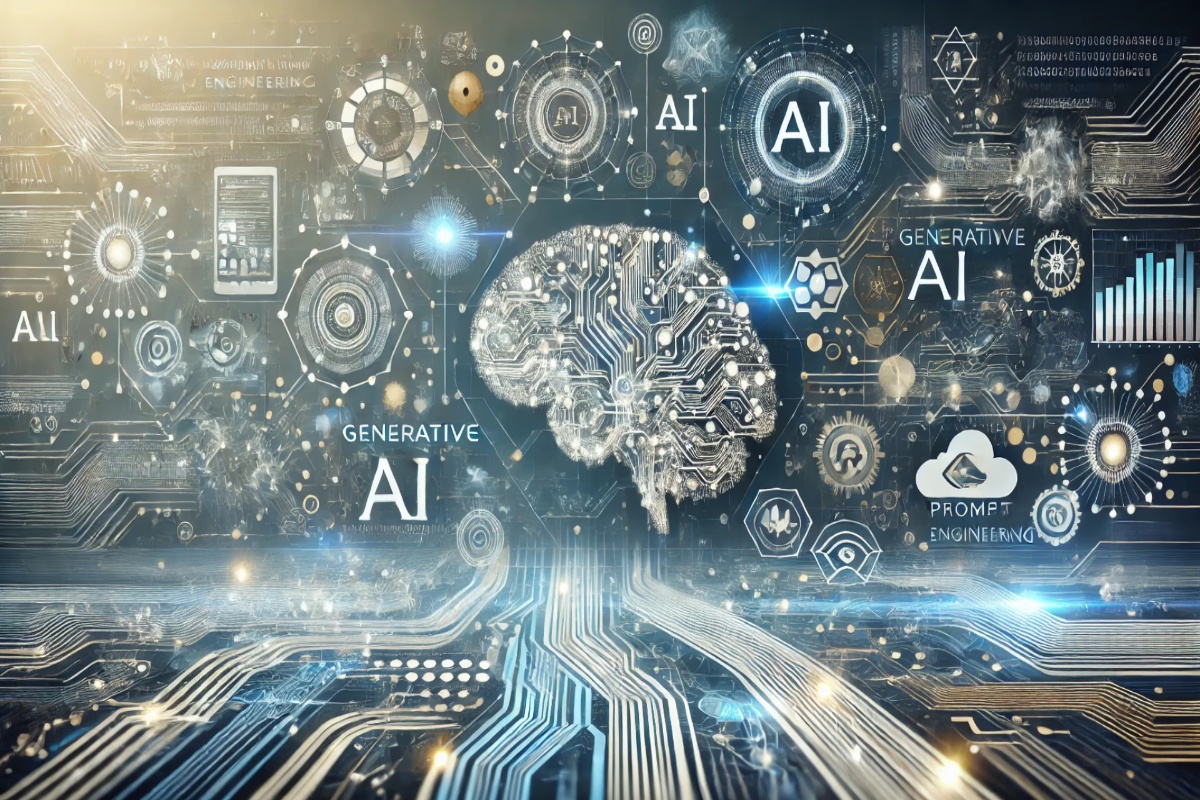In the rapidly evolving landscape of artificial intelligence, Generative AI stands out as a revolutionary force. From creating hyper-realistic images to drafting essays, writing code, and composing music, generative AI is redefining what machines can create. But mastering this transformative technology requires more than just basic knowledge—it calls for a deep understanding of concepts, tools, applications, and ethics.
In this blog, we’ll explore a comprehensive path to mastering skills in Generative AI. Whether you’re a student, developer, researcher, or business leader, this guide will help you navigate the world of generative models and harness their power responsibly.
What is Generative AI?
Generative AI refers to systems that can create new content, such as text, images, audio, video, or even code. These systems are trained on large datasets and learn patterns, styles, and structures to produce novel outputs that resemble the original data.
Popular examples include:
- GPT-4 (OpenAI): Text generation and understanding
- DALL·E 3 (OpenAI): Image generation from text
- Stable Diffusion: Open-source image generation
- Codex / GitHub Copilot: Code generation and automation
- Runway Gen-2 / Sora by OpenAI: Text-to-video generation
Why Master Generative AI?
Generative AI is becoming integral to industries such as healthcare, entertainment, education, software development, marketing, and more. Mastering generative AI can unlock:
- Career growth in AI/ML, data science, and software development
- Business opportunities in automation and personalized content
- Creative potential for art, storytelling, music, and design
- Strategic advantage through innovation and efficiency
Core Skills to Master in Generative AI
Let’s break down the essential skills and knowledge areas required to master generative AI:
1. Foundations of Machine Learning
Understanding generative AI starts with a strong grasp of machine learning and deep learning.
- Key Topics:
- Supervised vs. unsupervised learning
- Neural networks and deep learning
- Overfitting, bias-variance tradeoff
- Loss functions, gradient descent, and optimization
- Recommended Resources:
- Coursera – Andrew Ng’s ML Course
- fast.ai Deep Learning
- Google’s Machine Learning Crash Course
2. Understanding Generative Models
Generative models are algorithms that generate new data similar to their training data.
- Types of Generative Models:
- GANs (Generative Adversarial Networks)
- VAEs (Variational Autoencoders)
- Transformers (e.g., GPT, BERT, T5, LLaMA)
- Diffusion Models (e.g., Stable Diffusion, Denoising Diffusion Probabilistic Models)
- Study Goals:
- Learn architectures and mechanisms (attention, self-attention, latent spaces)
- Understand how these models are trained and evaluated
- Dive into specific use cases (e.g., image vs. text generation)
3. Hands-on Experience with Tools and Frameworks
Theory alone is not enough. Practical experience is key to mastering generative AI.
- Languages and Libraries:
- Python (primary language for AI development)
- TensorFlow, PyTorch (model development and training)
- Hugging Face Transformers (pretrained models and fine-tuning)
- OpenAI API, Cohere, Replicate, LangChain
- Platforms:
- Google Colab, Kaggle, Jupyter Notebooks
- GitHub (for sharing projects and collaboration)
- Projects to Try:
- Text summarization and chatbot with GPT
- Image generation using DALL·E or Stable Diffusion
- Custom music or art generation
- AI-assisted coding bots using Codex
4. Data Handling and Prompt Engineering
Data is the backbone of generative AI. Knowing how to prepare and use it effectively is vital.
- Skills to Learn:
- Data cleaning, augmentation, and preprocessing
- Tokenization and embedding for text
- Prompt engineering to fine-tune outputs (especially for large language models)
- Evaluating AI-generated content (BLEU, ROUGE, FID, human feedback)
5. Model Fine-Tuning and Customization
Pretrained models are powerful, but real value comes from tailoring them to specific tasks.
- Key Areas:
- Transfer learning and domain adaptation
- Fine-tuning on custom datasets
- Reinforcement learning with human feedback (RLHF)
- Low-rank adaptation (LoRA), parameter-efficient tuning methods
6. Ethical AI and Responsible Innovation
Generative AI has immense power—but with that comes responsibility.
- Ethical Considerations:
- Bias in training data and outputs
- Copyright and content ownership
- Deepfakes and misinformation
- Model misuse and safety risks
- Best Practices:
- Transparency in model use
- Bias detection and mitigation
- Open collaboration and research ethics
- Following AI governance frameworks (e.g., OECD, EU AI Act)
7. Staying Up-to-Date and Building a Network
The AI field changes rapidly. Staying informed is crucial.
- Communities & Newsletters:
- arXiv Sanity, Papers with Code
- Hugging Face forums
- OpenAI, DeepMind, Anthropic blogs
- Reddit r/MachineLearning, r/GenerativeAI
- Twitter/X and LinkedIn influencers in AI
- Conferences and Hackathons:
- NeurIPS, ICML, CVPR, EMNLP
- Kaggle competitions, AI hackathons
- Open-source projects on GitHub
Learning Path: Roadmap to Mastery
Here’s a suggested roadmap to structure your generative AI learning journey:
| Stage | Focus Area | Resources |
|---|---|---|
| Beginner | ML Basics, Python | Coursera, Kaggle |
| Intermediate | Deep Learning, GANs/VAEs | fast.ai, PyTorch |
| Advanced | Transformers, Diffusion Models | Hugging Face, Papers |
| Expert | Fine-tuning, Ethics, Deployment | OpenAI API, Custom Projects |
| Continuous | Community, Research, Ethics | Twitter, GitHub, Conferences |
Final Thoughts: The Future of Creation
Generative AI is not just a technical skill—it’s a gateway to the future of human-machine collaboration. As you master these tools and concepts, you’re not just learning how to build models; you’re learning how to shape the future of content, communication, and creativity.
The possibilities are endless—but responsibility, curiosity, and continual learning are your best companions on this journey.
Ready to start mastering generative AI?
Begin today—experiment, explore, and stay ethically grounded. Your next great innovation could be one prompt away.

